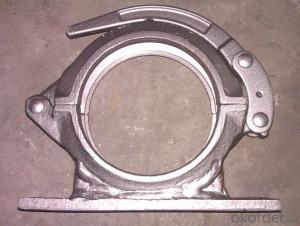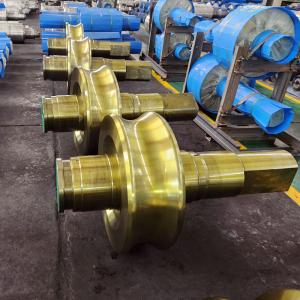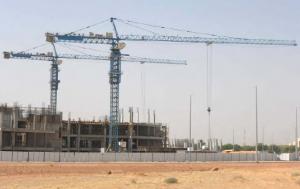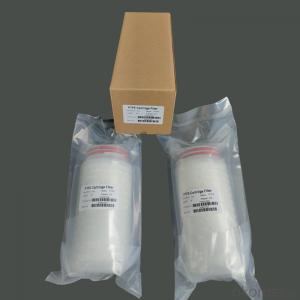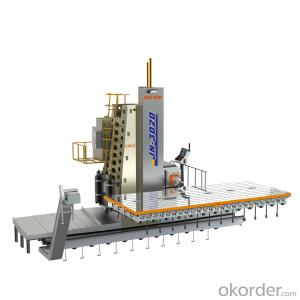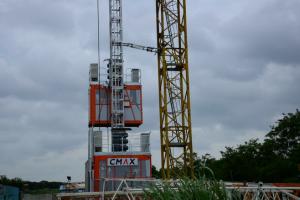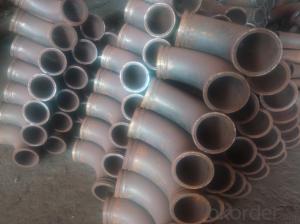Concrete Pump Forged Clamp Coupling DN65 2.5
- Loading Port:
- China main port
- Payment Terms:
- TT OR LC
- Min Order Qty:
- 50 PCS
- Supply Capability:
- 1000 PCS/month
OKorder Service Pledge
OKorder Financial Service
You Might Also Like
Product Description:
A coupling is a device used to connect two delivery pieps together at their ends for the purpose of transmitting, and prevent the concrete from leaking. Couplings do not normally allow disconnection of shafts during operation.
Main Product Features:
1. Use high quality steel. After high-temperature 1200 forging,it’s shaped.
2.High temperature forging.
3.convenient to use, easy operation,and high safety.
4.good sealing,wear-resising,longer service life.
5.do not restrict the steering tubes, pipes during the working process can be 360 degrees rotation.
6.used in concrete pump truck,concrete pump and pipeline connection seal in construction
work equipment.
Product Specifications:
1.Forged
2.2--8 inch
3.Galvanizing/Baking varnish
4.More durable,light,beautiful
Production steps:
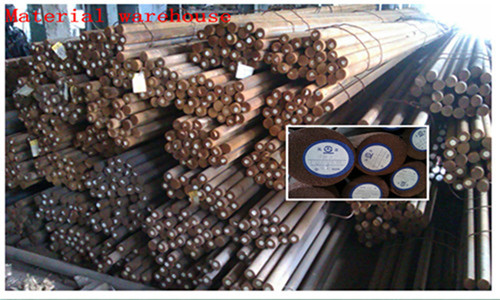

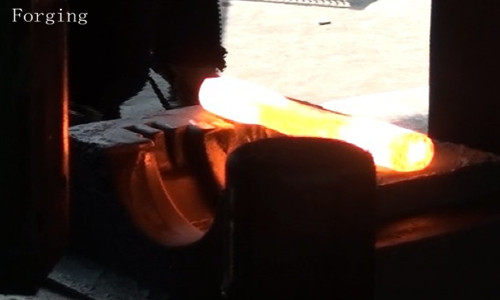
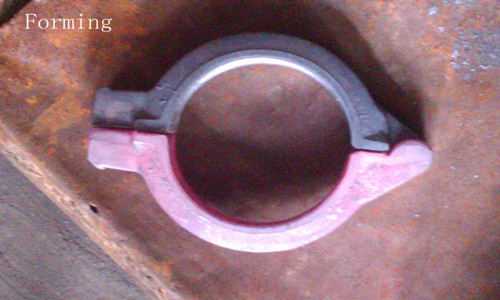

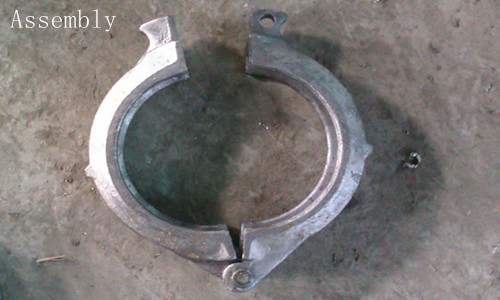
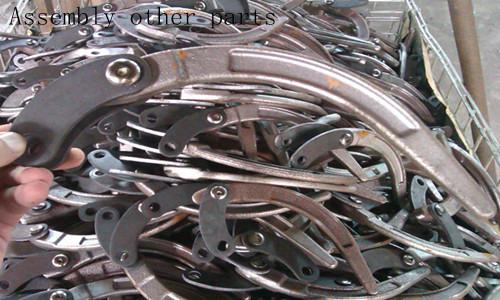
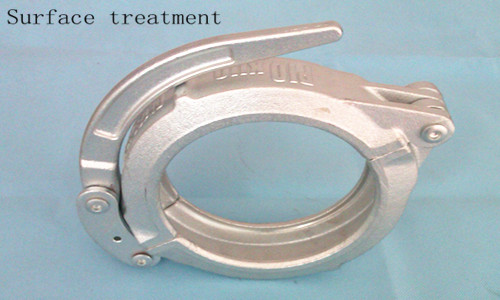
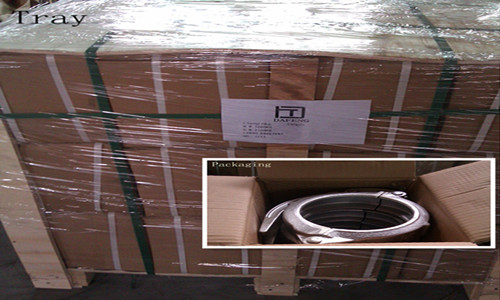
Concrete pump clamp Catalogue
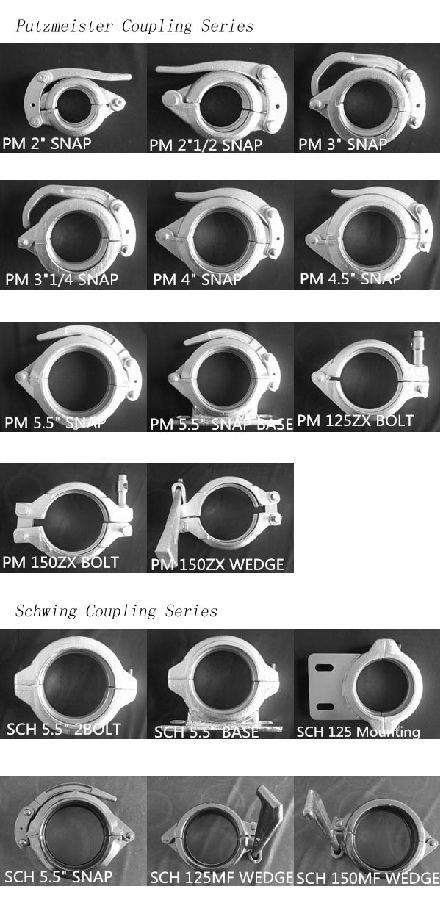
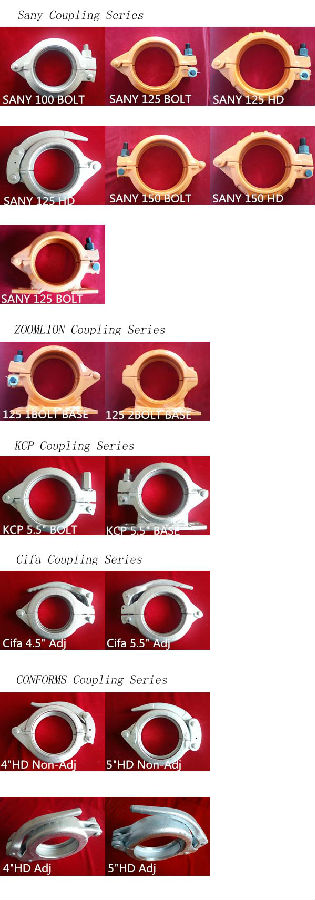
FAQ:
1.How do you regarding your product quality?
As our principle is more safety to save more. In China, there are lots of manufactures of this line, but we are the first one that use the forging technic in producing, firmly meet the PM standard.
2.Can I get some samples?
Of course you can. Small sample for free, but you pay the express. For some products are not small, like concrete pump pipe, it’s very difficult to deliver one pipe of 3000mm. If it’s possible, we’d like that you can come here to visit our factory. Welcome!
3. I want to make our logo on the products, is that ok?
Yes, it’s totally ok. OME is available from us.What you should do is send your logo, brand name, or picture to us. And let other things leave on us.
- Q:How often should concrete pump S valves be inspected and replaced?
- Concrete pump S valves should be inspected regularly, ideally every 500 hours of operation or at least once a year. However, the replacement of S valves will depend on various factors such as the quality of the concrete being pumped, the frequency of use, and the overall condition of the valve. It is recommended to consult the manufacturer's guidelines and seek professional advice to determine the specific timing of S valve replacement.
- Q:Can concrete pump spare parts be customized with branding or logos?
- Yes, concrete pump spare parts can be customized with branding or logos. Many manufacturers and suppliers offer the option to customize spare parts with branding or logos according to the specific requirements of the customer. This customization can include adding logos, names, or specific branding elements onto the spare parts. It not only enhances the aesthetic appeal of the spare parts but also helps in promoting the brand or company. Customized branding or logos on concrete pump spare parts can also serve as a form of identification and help in distinguishing the parts from others in case of repair or replacement needs.
- Q:Can I repair concrete pump spare parts instead of replacing them?
- Yes, it is possible to repair concrete pump spare parts instead of replacing them in some cases. Many concrete pump spare parts can be repaired, such as seals, gaskets, valves, and hydraulic components. However, the feasibility of repair depends on the extent of the damage and the specific part in question. Some damaged parts may be too worn or damaged to be effectively repaired, and in those cases, replacement may be necessary. It is important to consult with a professional or contact the manufacturer to determine if repair is a viable option for your specific concrete pump spare parts.
- Q:What are the signs of a malfunctioning hydraulic oil cooler?
- There are various indications that may suggest a malfunctioning hydraulic oil cooler. 1. Overheating: The engine or hydraulic system experiencing overheating is one of the most common indications. If the hydraulic oil cooler is not functioning correctly, it may fail to adequately cool down the hydraulic fluid, resulting in elevated temperatures in the system. This can result in decreased performance, increased component wear and tear, and potential fluid breakdown. 2. Fluid Leaks: Another indication is the presence of hydraulic fluid leaks. Damaged or worn seals, gaskets, or hoses in a malfunctioning hydraulic oil cooler can cause these leaks. The leaks can be observable as fluid drips or puddles beneath the machinery or as oily residue on components. 3. Increased Noise: A malfunctioning hydraulic oil cooler can also cause heightened noise levels in the hydraulic system. This could be attributed to the introduction of air into the system, leading to cavitation or aeration. These abnormal noises can signal that the cooler is not functioning correctly and should be inspected or replaced. 4. Elevated Temperatures: Consistently higher-than-normal readings on the temperature gauge of your hydraulic system could indicate a malfunctioning oil cooler. The cooler may be unable to effectively dissipate heat from the hydraulic fluid, resulting in rising temperatures. This can lead to reduced efficiency, increased component wear, and potential system failures. 5. Reduced Performance: A malfunctioning hydraulic oil cooler can also result in reduced overall machinery or equipment performance. This can manifest as slower operation, decreased power output, or diminished hydraulic system response. If you observe a decrease in performance, it is advisable to inspect the oil cooler for any issues. Promptly addressing any of these indications is crucial. Continuing to operate machinery with a malfunctioning hydraulic oil cooler can cause further damage, increased downtime, and potentially expensive repairs. It is recommended to consult with a qualified technician or hydraulic specialist to diagnose and resolve any problems with the oil cooler.
- Q:How often should hydraulic accumulator bladders be inspected or replaced in a concrete pump?
- Hydraulic accumulator bladders in a concrete pump should be inspected regularly, preferably on a monthly basis. This is to ensure that the bladders are in good condition and functioning properly. However, the frequency of inspection may vary depending on the specific operating conditions of the concrete pump. During the inspection, the bladders should be carefully examined for any signs of wear, damage, or leakage. If any of these issues are detected, it is recommended to replace the bladders immediately to prevent further damage to the hydraulic system and to maintain the overall efficiency and safety of the concrete pump. In addition to regular inspections, it is also important to follow the manufacturer's guidelines regarding the replacement interval for hydraulic accumulator bladders. This interval will usually be specified by the manufacturer and may vary depending on factors such as the type of accumulator and the working conditions of the concrete pump. Ultimately, the goal is to ensure that the hydraulic accumulator bladders are in optimal condition to maintain the performance and reliability of the concrete pump. Therefore, regular inspections and timely replacement of bladders are crucial for the safe and efficient operation of the concrete pump.
- Q:What are the common causes of overheating in concrete pump spare parts?
- Concrete pump spare parts can overheat due to various common causes. One primary reason is improper lubrication, which results in increased friction and overheating of the pump's moving parts like bearings and pistons. To prevent this, it is essential to regularly inspect and maintain the lubrication system to ensure smooth operation. Excessive use or continuous operation without breaks is another common cause of overheating. Concrete pumps have a designated workload, and surpassing it or neglecting proper rest periods can lead to overheating of the components. To avoid this, it is crucial to adhere to recommended operating guidelines and periodically allow the pump to cool down. Additionally, overheating can occur due to clogged or blocked cooling systems. The cooling system in a concrete pump regulates temperature by circulating coolant around vital parts. If the system gets clogged or the coolant level is insufficient, overheating may occur. Regular inspection, cleaning, and maintaining appropriate coolant levels can prevent this issue. Inadequate ventilation is also a common cause of overheating. Concrete pumps generate substantial heat during operation, and if the surrounding environment lacks proper airflow, the heat cannot dissipate effectively. This can lead to overheating of spare parts. To avoid this, it is important to operate the pump in well-ventilated areas or utilize additional cooling measures like fans or air conditioning. Lastly, a malfunctioning or damaged pump component can cause overheating. When a part such as the motor or hydraulic system does not function correctly, it places additional strain on other components, resulting in overheating. Regular maintenance and inspection of the pump's components can help identify and address any potential issues before they lead to overheating. In conclusion, preventing overheating in concrete pump spare parts requires proper lubrication, adherence to operating guidelines, maintenance of cooling systems, ensuring adequate ventilation, and regular component inspection.
- Q:Can I get spare parts for concrete pumps with different types of valve systems, such as S-valve or gate valve?
- Indeed, procuring spare parts for concrete pumps equipped with various valve systems, such as S-valve or gate valve, is entirely feasible. Manufacturers and suppliers of concrete pumps generally offer an extensive selection of spare parts, which encompass valves. These spare parts can be procured either directly from the manufacturer or via authorized distributors. To ensure compatibility, it is vital to furnish precise information regarding the concrete pump model, valve type, and any other pertinent details when placing an order for spare parts. Moreover, there exist specialized firms that exclusively concentrate on providing spare parts for concrete pumps, irrespective of the valve system employed. These entities often possess a comprehensive inventory of spare parts and can offer assistance in identifying and sourcing the necessary components for your specific concrete pump.
- Q:What are the different types of concrete pump hydraulic filters?
- Construction projects commonly utilize various types of concrete pump hydraulic filters. These filters are crucial for ensuring the hydraulic system's smooth operation and longevity. 1. Suction filters, located at the hydraulic pump's intake side, play a vital role in removing larger particles and debris from the hydraulic oil. They prevent contaminants from entering the pump and causing harm to its components. 2. Positioned on the return line, return line filters are designed to eliminate smaller particles and contaminants from the hydraulic oil before it is returned to the reservoir. By maintaining oil cleanliness, they prevent system wear and tear. 3. Pressure line filters, typically installed after the hydraulic pump on the high-pressure side, remove fine particles and contaminants from the oil. Their purpose is to guarantee the valves, cylinders, and other hydraulic components work smoothly. 4. In-tank filters are submerged in the hydraulic oil reservoir to filter the oil as it circulates through the tank. They effectively eliminate larger particles and contaminants settled at the bottom of the reservoir. 5. Magnetic filters attract and remove metallic particles, such as iron filings and metal shavings, from the hydraulic oil. They are highly effective in capturing ferrous contaminants. 6. Breather filters, installed on the breather vent of the hydraulic oil reservoir, maintain the cleanliness and integrity of the hydraulic oil by preventing dust, dirt, and moisture from entering the system. Regular inspection and replacement of these hydraulic filters are crucial for optimal performance and longevity of the concrete pump's hydraulic system. Neglecting this maintenance can lead to increased wear and tear, decreased efficiency, and potential damage to the pump and its components.
- Q:Are there any warranties or guarantees on concrete pump spare parts?
- Yes, there are warranties and guarantees available on concrete pump spare parts. Many reputable manufacturers and suppliers offer warranties to ensure the quality and performance of their products. These warranties typically cover defects in materials or workmanship and provide replacements or repairs within a specified time frame. It is important to check the terms and conditions of the warranty or guarantee provided by the specific supplier or manufacturer before purchasing concrete pump spare parts.
- Q:What is the importance of a good quality concrete pump seal?
- A good quality concrete pump seal is important because it helps to prevent leakage and ensure the smooth and efficient operation of the pump. It helps to maintain the pressure and flow of the concrete, reducing the risk of blockages or malfunctions. A reliable seal also extends the lifespan of the pump by minimizing wear and tear on the internal components. Ultimately, a good quality concrete pump seal is crucial for achieving high-quality and consistent results in construction projects.
1. Manufacturer Overview |
|
|---|---|
| Location | |
| Year Established | |
| Annual Output Value | |
| Main Markets | |
| Company Certifications | |
2. Manufacturer Certificates |
|
|---|---|
| a) Certification Name | |
| Range | |
| Reference | |
| Validity Period | |
3. Manufacturer Capability |
|
|---|---|
| a)Trade Capacity | |
| Nearest Port | |
| Export Percentage | |
| No.of Employees in Trade Department | |
| Language Spoken: | |
| b)Factory Information | |
| Factory Size: | |
| No. of Production Lines | |
| Contract Manufacturing | |
| Product Price Range | |
Send your message to us
Concrete Pump Forged Clamp Coupling DN65 2.5
- Loading Port:
- China main port
- Payment Terms:
- TT OR LC
- Min Order Qty:
- 50 PCS
- Supply Capability:
- 1000 PCS/month
OKorder Service Pledge
OKorder Financial Service
Similar products
New products
Hot products
Related keywords


